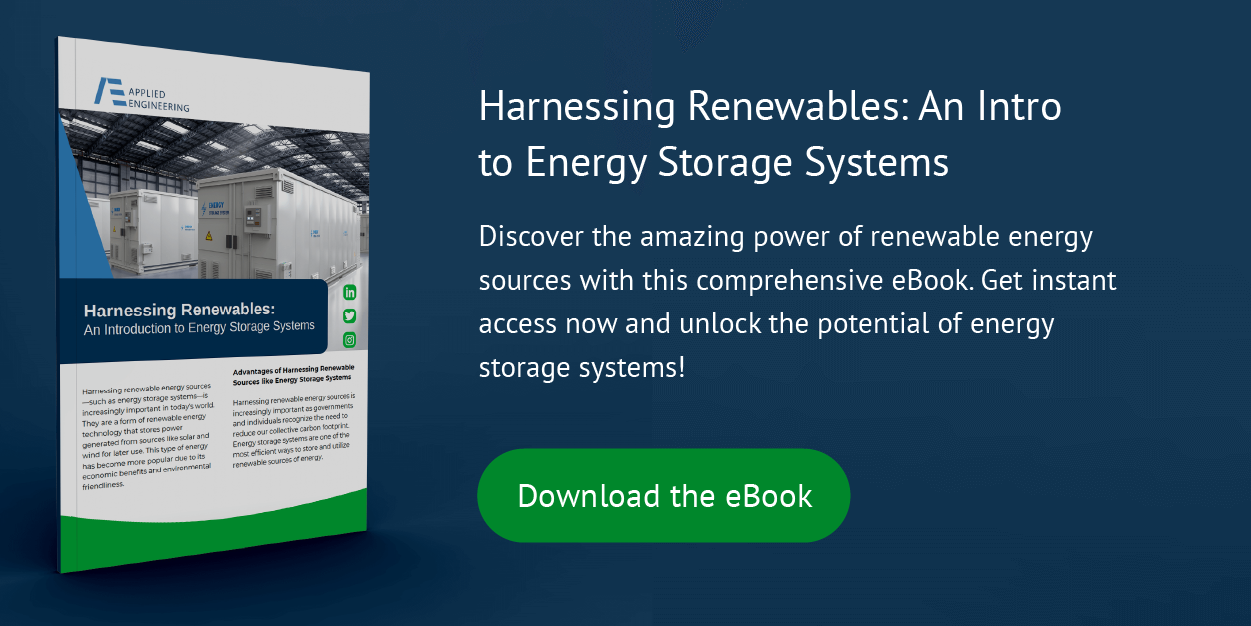How Battery Energy Storage Systems are Revolutionizing Renewable Energy
The world is facing a critical challenge: how to reduce greenhouse gas emissions and mitigate the impacts of climate change. Renewable energy sources like wind and solar power are key solutions to this challenge, but they also present a unique problem: intermittency. The sun doesn't always shine, and the wind doesn't always blow, which means that renewable energy sources can only generate electricity when conditions are right.
Fortunately, advances in battery energy storage systems (BESS) are revolutionizing renewable energy by providing a way to store excess energy generated during times of abundance and use it when demand is high.
How BESS Works
BESS is essentially a system of batteries that store electrical energy generated by renewable sources such as wind turbines or solar panels. The stored energy can be released back into the grid when needed, allowing grid operators to balance supply and demand more effectively.
There are several different types of BESS technologies available today. One popular type is lithium-ion batteries—the same technology used in electric vehicles—because they offer high efficiency and long cycle life. Other technologies include flow batteries, which use liquid electrolytes for storage, and sodium-sulfur batteries, which operate at high temperatures.
Benefits of BESS for Renewable Energy
BESS offers several benefits for renewable energy:
Grid Stability: By storing excess electricity generated during times of low demand, BESS provides a way to better balance the grid during peak periods when demand is high.
Cost Savings: BESS can help reduce costs associated with building new power plants or upgrading existing ones by making it possible to meet peak demand without relying on expensive fossil fuels.
Increased Reliability: With BESS in place, utilities can maintain a reliable supply of electricity even if there is a sudden drop in wind or solar power output due to weather conditions.
Increased Usefulness: Renewables become much more useful with battery storage because they can provide electricity 24/7 instead of only when conditions allow them to generate power.
Challenges Facing BESS
While BESS holds great promise for revolutionizing renewable energy production, there are still some challenges that need to be addressed before it can become widespread:
Cost: While prices have come down significantly over recent years due to advances in technology and economies of scale from increased production volumes; however, cost remains one major obstacle compared with traditional fossil fuel-based systems.
Capacity Limits: Current battery technology has limitations regarding capacity that may not yet be sufficient enough to store large amounts of excess power produced by renewables over multiple days or weeks.
Environmental Impacts: Manufacturing batteries requires significant amounts of resources such as minerals and metals that must be extracted from natural reserves which may lead towards environmental degradation if not managed properly.
Battery Energy Storage Systems represent an important breakthrough in renewable energy technology as they enable us to harness clean power whenever we need it most without being limited by the vagaries of nature alone. While there remain challenges associated with scaling up battery technology for industrial-scale applications; progress continues at an encouraging pace thanks largely to innovations in materials science coupled with increasing investment from governments around the world committed to sustainable development goals.
BESS represents one piece among many others required to achieve our common goal—carbon neutrality—while providing access to affordable clean energy globally without compromising economic growth or social welfare standards set out by United Nations Sustainable Development Goals.

